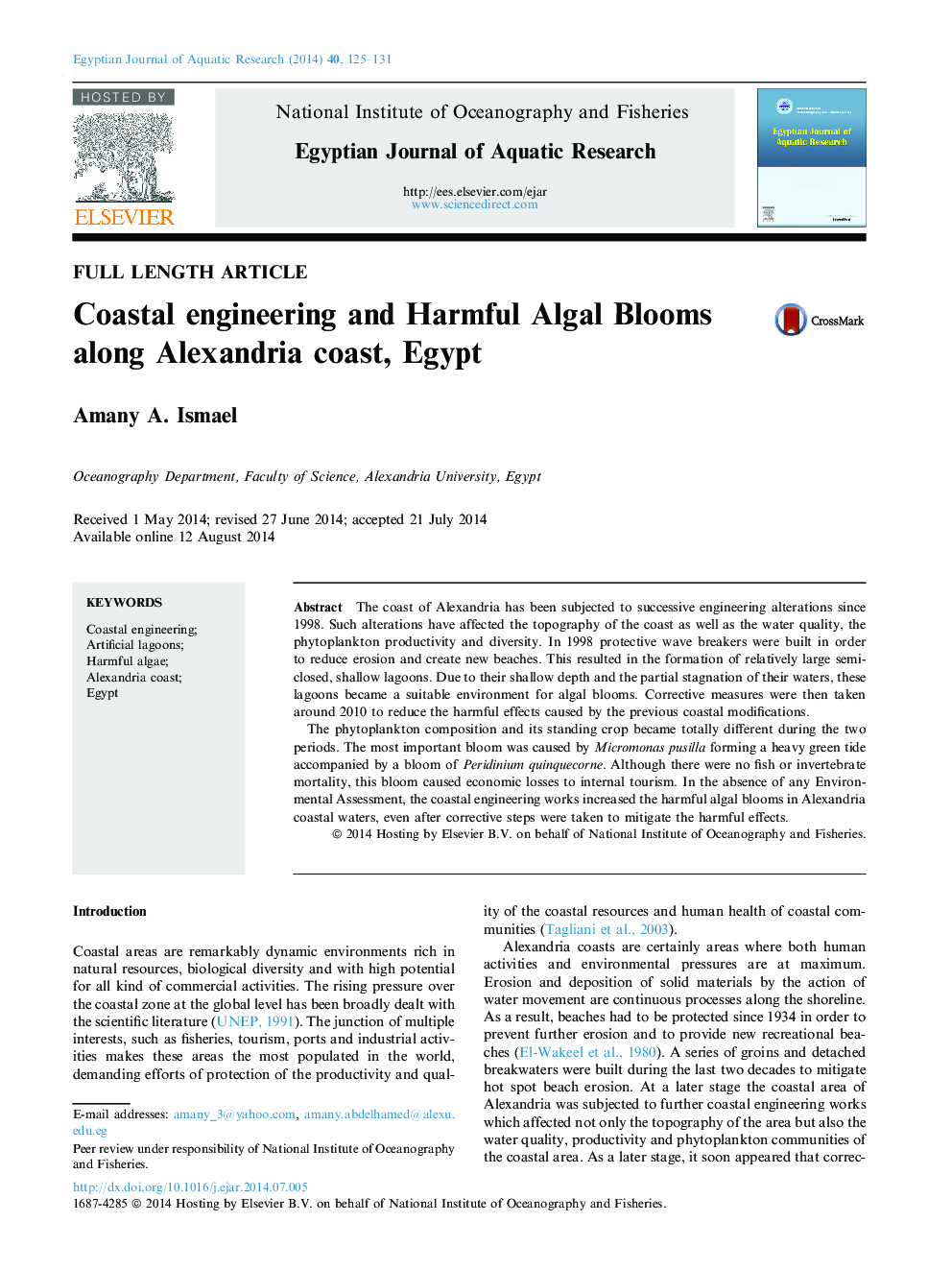| Article ID | Journal | Published Year | Pages | File Type |
|---|---|---|---|---|
| 4493173 | The Egyptian Journal of Aquatic Research | 2014 | 7 Pages |
The coast of Alexandria has been subjected to successive engineering alterations since 1998. Such alterations have affected the topography of the coast as well as the water quality, the phytoplankton productivity and diversity. In 1998 protective wave breakers were built in order to reduce erosion and create new beaches. This resulted in the formation of relatively large semi-closed, shallow lagoons. Due to their shallow depth and the partial stagnation of their waters, these lagoons became a suitable environment for algal blooms. Corrective measures were then taken around 2010 to reduce the harmful effects caused by the previous coastal modifications.The phytoplankton composition and its standing crop became totally different during the two periods. The most important bloom was caused by Micromonas pusilla forming a heavy green tide accompanied by a bloom of Peridinium quinquecorne. Although there were no fish or invertebrate mortality, this bloom caused economic losses to internal tourism. In the absence of any Environmental Assessment, the coastal engineering works increased the harmful algal blooms in Alexandria coastal waters, even after corrective steps were taken to mitigate the harmful effects.
